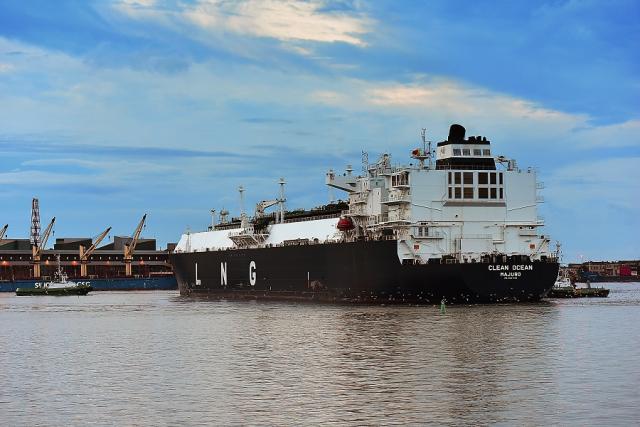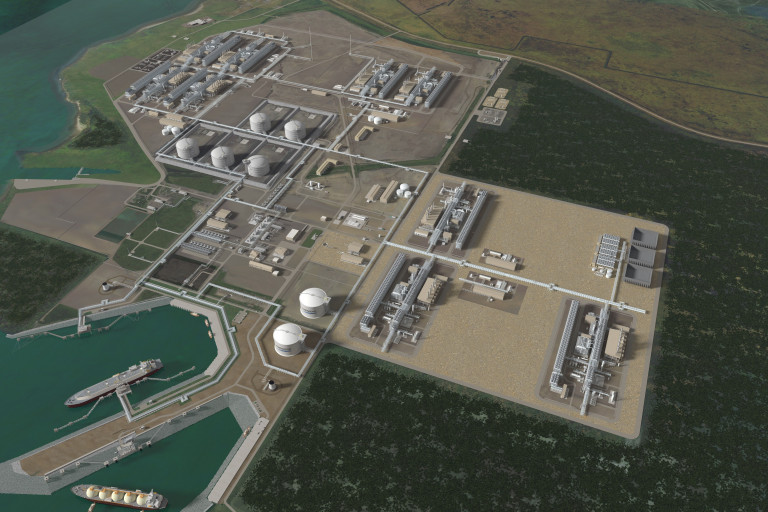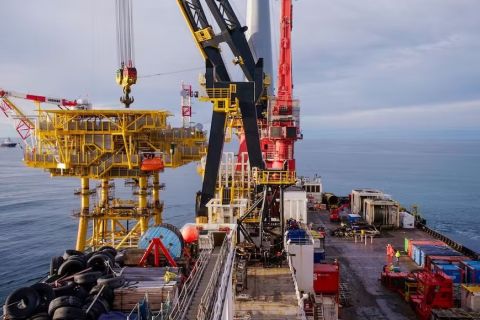
Cheniere announces plans to build three trains with capacity of about 20 mtpa at its Sabine Pass LNG terminal. (Source: Shutterstock.com)
Story updated at 2:30 p.m. CT.
Cheniere Energy Inc. will expand its Sabine Pass, Louisiana, operations by adding as many as three trains in an adjacent parcel with a total capacity of about 20 million tonnes per annum (mtpa), the company said Feb. 23 as part of its fourth-quarter 2022 earnings announcement.
Cheniere has engaged with Bechtel to develop a FEED study for the project, which it said could come online in late 2028 at the earliest. The pre-filing review process has been started with Federal Energy Regulatory Commission (FERC).
The Sabine Pass LNG facility consists of six trains with capacity of about 30 mtpa. The new trains, with average capacity of 6.5 mtpa, are substantially larger than the existing trains. Cheniere has turned to midscale trains for its expansion of Corpus Christi LNG, but President and CEO Jack Fusco maintained during a Feb. 23 earnings call with analysts that larger units would be more economical for Sabine Pass, which relies on coal-fired electricity transported from Texas.
Conceived as a regasification import terminal, it was among the first to be converted to an LNG liquefaction plant and export terminal in the wake of the shale revolution and began operations in 2016.

The project will be located adjacent to the current liquefaction facility, now used as a laydown area for storage of equipment and supplies.
“It’s primed and ready to go, which is one of the advantages that we have as a brownfield site,” Fusco told analysts during the call. “The infrastructure is there at the facility.”
Still early in its development, the project is unlikely to pass $100 million in the next year, but Zach Davis, executive vice president and CFO, said the company would be able to expand while living within cash flows. As with other Cheniere projects, a final investment decision (FID) would not come until about 90% of capacity is contracted.
The boil-off gas reliquefaction unit is new to Cheniere facilities. The current process is to redirect boil-off gas back into the trains where it is reprocessed. That doesn’t affect production, but it takes up space in the train, which hinders feedgas flows.
“We ran the math and figured that the boil-off gas reliquefaction unit would substantially help us increase production throughout the rest of the facility,” Fusco said. “That’s an added benefit that we don’t currently have at either of the sites.”
Cheniere is also expanding its Corpus Christi LNG terminal on the South Texas Gulf Coast. In the CCL Stage 3 Project, which received final investment decision in June, seven midscale trains with total capacity of more than 10 mtpa will be built on an adjacent parcel.
An additional expansion project involves construction of two trains adjacent to CCL Stage 3, with capacity of about 3 mtpa. That pre-filing process began in September.
In its earnings release, Cheniere reported net income $3.9 billion for fourth-quarter 2022 and $1.4 billion for the full year. Revenues were $9.1 billion for the quarter and $33.4 billion for the year. Consolidated adjusted EBITDA totaled about $3.1 billion for the quarter and $11.6 billion for all of 2022.
Cheniere’s 2023 guidance of $8 billion to $8.5 billion in consolidated EBITDA fell short of analysts’ consensus estimate.
Cowen, which estimated consolidated EBITDA of in the area of $8.6 billion, said in a note that the low guidance was not a total surprise, and it could increase.
“This view is based on the fact [Cheniere] has limited ability to hedge spot exposure beyond one quarter while it tends to guide conservatively,” analysts wrote in a Feb. 23 note.
Cheniere’s stock rose sharply by 8.36% in morning trading, up 12.36 to 160.22. It is up 34.8% in the last year.
Recommended Reading
E&P Highlights: March 11, 2024
2024-03-11 - Here’s a roundup of the latest E&P headlines, including a new bid round offshore Bangladesh and new contract awards.
E&P Highlights: Feb. 5, 2024
2024-02-05 - Here’s a roundup of the latest E&P headlines, including an update on Enauta’s Atlanta Phase 1 project.
Chevron Hunts Upside for Oil Recovery, D&C Savings with Permian Pilots
2024-02-06 - New techniques and technologies being piloted by Chevron in the Permian Basin are improving drilling and completed cycle times. Executives at the California-based major hope to eventually improve overall resource recovery from its shale portfolio.
TotalEnergies Fénix Platform Installed Offshore Argentina
2024-02-13 - First gas from the TotalEnergies-operated project is expected in fourth-quarter 2024.
US Oil, Gas Rig Count Rises to Highest Since September: Baker Hughes
2024-03-01 - The U.S. oil and natural gas rig count is at its highest since September 2023.





